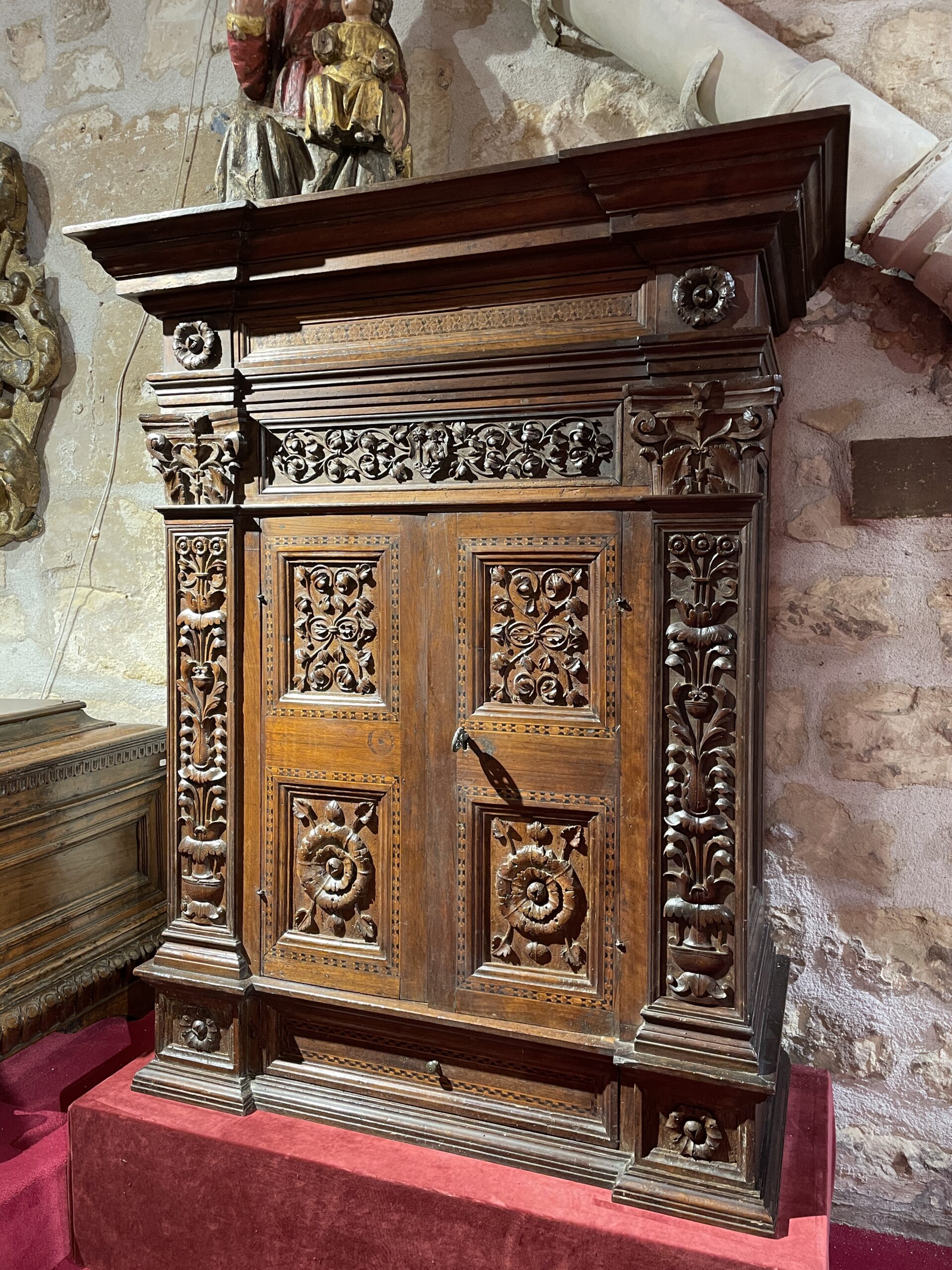Description
This small cabinet with two doors in the front and a drawer is a synthesis of sculpture and marquetry, different techniques that were very popular during the Italian Renaissance.
Perfectly structured, it imitates the facades of ancient temples.
The two leaves are framed by two pilasters that rise from a slightly projecting moulded base. The base decorated with a rose window frames a long drawer. The pilasters are carved with plant motifs. Two capitals with acanthus baskets crown them and support a powerful entablature with a particularly overhanging cornice. A frieze of stars in marquetry is set between two beautiful flowers.
Each leaf is divided into two almost square panels surrounded by marquetry filleting depicting geometric motifs. The upper panels are decorated with fine scrolls forming interlaces while the two lower panels are carved with double corolla flowers.
A frieze of foliage symmetrically frames a coat of arms.
The small and elegant proportions of this cabinet, the vigour of its sculpture, the refinement of its marquetry along with its volumes make it a piece of furniture of great quality
HISTORIC
At the end of the 15th century, Florence was home to numerous marquetry and woodcarving workshops. The golden age of intarsia, the marquetry of wood, took place between 1470 and 1520.
During the 15th century, intarsia was limited to light, sober and sparingly distributed friezes. The end of the quattrocento witnesses a greater use of marquetry turning pieces of wood into real palatial pieces.
This furniture, isfoggiato, as opposed to the very regulated fogia furniture ( only one type of wood, cornice forbidden, board’s uniform thickness ) was a real sumptuary expense requiring for their realization an authorization of the Arte dei Legnaioli and the payment of a tax.
Often compared stylistically to Middle Eastern craftsmanship, of which certain groups could be found in Venice or Florence, the origin of intarsia is to be found beyond that in the cosmatesque (stone mosaics). Both for its techniques and style, the work of the Cosmati marble makers and their successors, applied to church pavements and pieces such as wall facings or ambos, leads us to see intarsia as a true evolution and derivation of this craft. Moreover, it was common for some of the best wood markers, such as Domenico del Coro or Pietro del Minella, to be employed in the creation of church pavements.
Intarsia itself is divided into several varieties which differ in their processes as well as in their appearance.On this cabinet predominates certosina ; a marquetry composed of tiny pieces of wood, most often in geometrical forms. The word certosina originates from the work produced by the carthusians. Disciples of Saint Bruno applied themselves for centuries to the patient making of wood or mother-of-pearl inlays, bone or ivory marqueteries, whose purpose was to enrich ecclesiastical furniture.
Certosina spread beyond the monastic order to reach Florentine workshops amongst others. When intarsia pittorica appeared, certosina did not fade away and kept being used on furniture as bands, friezes or cornices.

